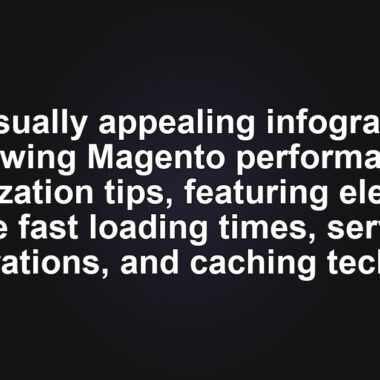How to Start an Online Store with WordPress and WooCommerce
Creating an online store with WordPress using WooCommerce is an exciting way to start your eCommerce journey. The platform’s user-friendly interface and extensive customization options make it accessible for all skill levels.
Getting Started with Your WordPress Online Store
As eCommerce platforms become more accessible, aspiring sellers have multiple options to start selling online or expand their offline store’s reach. One popular choice is using WordPress and one of its most popular eCommerce plugins, WooCommerce. This guide will show you how to create an online store with WooCommerce and explore the benefits of starting your online business venture on WordPress.
1. Decide What You Want to Sell
Your product choices will shape the entire eCommerce business, from marketing strategy to store design. Basing this decision on your expertise and passion will make your business journey more enjoyable, boosting your investment in the growth and quality of your offerings.
Use product research tools like Google Trends and Trend Hunter to find profitable products to sell. Whether selling physical or digital products, WordPress and WooCommerce can support your business needs, from boutiques to eBook marketplaces.
2. Choose the Right WooCommerce Hosting Platform
Since WordPress is self-hosted, you need to buy web hosting and a domain name to run it. Many hosting options are available with various features at different prices, so pick one that best suits your needs.
With Hostinger‘s managed WooCommerce hosting, you can save time by configuring WordPress installation and WooCommerce store setup during the onboarding process. Starting at $7.99/month, our hosting service provides a free domain name, SSL certificate, email, and automatic daily backups.
3. Configure WooCommerce Settings
Once you have installed WordPress, follow these steps to set up your WooCommerce website:
- Install and activate the plugin to access the WooCommerce Setup Wizard. Click Set up my store to start the setup process.
- Choose the seller profile that best describes your business venture.
- Fill in your online store’s name, location, product type, and email address.
- WooCommerce offers free features to scale your WordPress eCommerce store. For now, click Continue to skip ahead.
- After the initial setup is complete, it will redirect you to the WooCommerce dashboard.
4. Customize Your Store with an eCommerce Theme
The store’s design influences your brand’s look and feel, impacting the shopping experience. Fortunately, WooCommerce has a wide range of excellent eCommerce themes for various business niches.
When choosing a theme for your eCommerce platform, prioritize a design that aligns with your brand and effectively displays your products. A good theme should be visually appealing, easy to navigate, and well-organized.
- Navigate to Appearance → Themes from your WordPress dashboard and select Add New Theme.
- Click Feature Filter and select eCommerce under Subject to show only eCommerce themes in the search results. Hit Apply Filters to confirm your choice.
- Install and activate the WordPress theme that best suits your online store.
- Click on the Customize button above your chosen theme. It will redirect you to WordPress Theme Editor, where you can modify the site’s appearance.
Check out some of the best WooCommerce themes to help you start:
- Astra – a premium, lightweight theme with abundant customization options.
- OceanWP – one of the fastest WordPress themes suitable for various business niches.
- Zigcy Lite – a free, SEO-ready WordPress theme with deep-level WooCommerce integration.
- WooCommerce Storefront – a free WooCommerce-developed theme with a range of extensions.
5. Set Up Payment Methods
Your chosen payment gateway directly impacts how you accept payments from customers. The right payment gateways ensure smooth and secure checkouts, so it’s crucial to set them up correctly.
WooPayments accepts debit and credit card payments and local payment methods. It’s one of the best WooCommerce payment gateways available, offering seamless integrations and ease of use.
WooCommerce also supports third-party payment options like Stripe, PayPal, and Apple Pay. Install and connect your chosen payment gateway’s extension to your online store or purchase its plugin from WooCommerce Marketplace.
6. Add Products to Your WooCommerce Store
After setting up your WordPress eCommerce website, it’s time to populate it with products.
- Go to Products → Add New from the WordPress dashboard.
- Enter the product’s name and description. See our guide on writing a product description for tips.
- Pick a product type from the dropdown menu within the Product data section.
Here’s an example of a WooCommerce product page. Manage all of your product listings via Products → All Products. Filter items by product type and stock status as needed.
7. Install Additional Plugins to Extend the Store’s Functionality
WooCommerce provides all the essential tools and features to run an online store. However, many excellent WooCommerce plugins are available to scale your WordPress site with advanced functionality.
Only install plugins that your business actually needs, as having too many plugins can slow down your eCommerce store. Get plugins from trusted platforms and update them regularly for compatibility with the latest versions of WordPress and other integrated tools.
Hostinger offers excellent hosting solutions for WordPress and WooCommerce users. Check out their packages to boost your online store’s performance and reliability.
What You Should Do After Creating an Online Store
Launching your online store is only half the journey. Here are some tips for growing your business and setting it up for success:
- Perform regular WordPress updates – always use the latest versions of WordPress and WooCommerce core software, themes, and plugins to ensure optimal performance and security.
- Implement security best practices – follow our security checklist to safeguard your WordPress website from cyber attacks.
- Optimize WooCommerce site speed – regularly evaluate and enhance your website’s loading times to improve user experience and SEO rankings.
- Practice SEO – boost your website’s visibility on search engines by implementing WooCommerce SEO strategies.
- Create a blog – write informative blog posts about your products or industry to engage your audience and drive traffic to your site. Maintaining a regular publishing schedule helps drive traffic to your online store and establish authority in your niche.
- Start affiliate marketing – partner with influencers or bloggers in your niche to grow your audience base and boost sales.
- Create an email newsletter – build an email list to keep your customers informed about new products, promotions, and content.
- Analyze website performance – regularly check your website speed and monitor user behavior using analytics tools for future improvements.
Conclusion
The eCommerce industry’s lucrative opportunities inspire more sellers to launch eCommerce stores. With various accessible eCommerce platforms to choose from, anyone can jump on the trend without needing coding skills.
Through this guide, you learned how to create an eCommerce website with WordPress and extend the store’s functionality with WooCommerce. Let’s recap the steps:
- Decide what to sell.
- Choose the right WordPress hosting provider.
- Install WordPress and configure WooCommerce settings.
- Set up payment methods.
- Pick an eCommerce theme.
- Add products to the eCommerce site.
- Install WooCommerce plugins for additional features.
We hope this article helped you launch a successful online store. If you have any questions, check out our FAQ section or leave a comment below. Good luck!
How to Create an Online Store With WordPress FAQ
This section covers the most common questions about building an online store with WordPress.
Can I Build an Online Store With WordPress?
Yes, you can turn your WordPress site into an online store using eCommerce plugins. We recommend using WooCommerce, a popular free plugin that adds eCommerce functionality to WordPress. It has a wide range of features and extensions to help you create a successful eCommerce store.
How Secure Is WooCommerce for Handling Online Transactions?
WooCommerce employs robust encryption and frequent updates to secure online transactions. It complies with the European General Data Protection Regulation (GDPR) and Payment Card Industry Data Security Standards (PCI DSS), ensuring a safe shopping experience for users and reliability for store owners.
Are There Any Ongoing Costs of Using WooCommerce?
Yes. While WooCommerce is free, running your self-hosted WordPress site requires periodic payments for the web hosting and domain name. Adding extra eCommerce features and customizing your store’s design with premium plugins and themes also incur additional costs for the WooCommerce store.
Starter-Pack HTML Section
This is where the unchanged Starter-Pack HTML section is included.
👉 Start your website with Hostinger – get fast, secure hosting here 👈
🔗 Read more from MinimaDesk:
- How to Disable xmlrpc.php in WordPress: A Step-by-Step Guide
- Mastering the WP-Content Directory in WordPress
- The Ultimate Guide to WP-Content: Access, Upload, and Hide Your WordPress Directory
- Mastering WordPress RSS Feeds: A Beginner’s Guide
🎁 Download free premium WordPress tools from our Starter Tools page.








